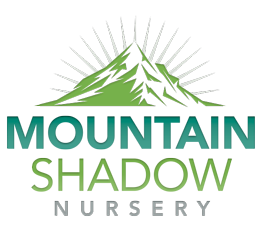Plants
A selection of our native stripebark maple with striking red bark. A small understory tree which will reach 10-25′ in height. Yellow fall color. Zone 3-7. RHS Award of Merit in 1976
One of the best snakebark maple selections. 20′ x 20′ Zone 4-8. May be more heat tolerant than other similar selections.
A compact agave (2-3′ x 3-4′) with broad blue-grey leaves. Commonly referred to as Artichoke Agave. Zone 8-11
A compact succulent with a mesmerizing spiral pattern. Zone 7-9
An excellent selection made by Will Wandell. Plants are vigorous with terrific white flowers, purplish fruit and scarlet fall color. 15’x 20-25’. Zone 4-8. Plant royalty applies for this plant.
A great selection from Arbutus unedo ‘Compacta’ seedlings by Gerd Schneider in 1997. Grows about 6 to 8 feet wide and tall. Deep pink flowers and showy orange-red fruits appear in the fall and persist through the fall and winter months. Zone 7-9.
An excellent selection that was discovered and introduced by the late Earl Cully in 1979. The plant is a vigorous growing form of river birch with salmon pink to cream to cinnamon brown colored bark. 40-70’ tall x 30-40’ wide. Zone 4-9.
A white-barked paper birch selected and introduced by Evergreen Nursery Company. Plant habit is broad, dense and pyramidal form. This paper birch was a selection from test plots containing hybrids of known bronze birch borer resistant parents. It is the most drought tolerant selection of the Renaissance series of birches. Zone 3-7b
 An exceptionally beautiful dark purple leaf hybrid birch with white bark from Evergreen Nursery Co. Inc. This is a hybrid of the ‘Whitespire’ birch and ‘Crimson Frost’ birch. An excellent grower, it’s considered by both the introducer and other growers as a distinct improvement over ‘Crimson Frost’ birch. Plants are vigorous, upright growing with white bark and deep red-purple leaves. Available for licensed growers. Zone 3-7b
An exceptionally beautiful dark purple leaf hybrid birch with white bark from Evergreen Nursery Co. Inc. This is a hybrid of the ‘Whitespire’ birch and ‘Crimson Frost’ birch. An excellent grower, it’s considered by both the introducer and other growers as a distinct improvement over ‘Crimson Frost’ birch. Plants are vigorous, upright growing with white bark and deep red-purple leaves. Available for licensed growers. Zone 3-7b
Figs have undergone heat treatment and meristem protocols to potentially remove some/all fig-specific viruses. Improved vigor has been observed but no virus testing has been done to guarantee complete virus removal.
Figs have undergone heat treatment and meristem protocols to potentially remove some/all fig-specific viruses. Improved vigor has been observed but no virus testing has been done to guarantee complete virus removal.
The species form of Japanese forest grass with green foilage.
A kalmia latifolia selection from one of the southern-most ranges of Kalmia in the US. This plant was found near the Sepulga River in Alabama (~100 miles north of Pensacola). Pink to white flower. Thought to potentially have more heat tolerance than other selections.
A little leaf Kalmia from Dick Jaynes. Flowers are star shaped with a bright cinnamon-maroon band. After 25 years – 5.5 ft tall x 6 ft wide. Clean green and glossy foliage.
 Heritage Trees Inc. introduced this sweetbay magnolia. This selection has a very upright habit of growth (usually multistem), beautiful dark green foliage and blooms over a long period of time during the late spring. Ultimate plant size is 35 feet tall by 18 feet wide. Growth rate is moderate to fast. Sweet scented blossoms are cup-shaped, creamy white and produced at a very young age. It has proven to be very winter hardy. The plant has withstood -33º F without damage. Zone 4b -9. Sold to licensed growers only.
Heritage Trees Inc. introduced this sweetbay magnolia. This selection has a very upright habit of growth (usually multistem), beautiful dark green foliage and blooms over a long period of time during the late spring. Ultimate plant size is 35 feet tall by 18 feet wide. Growth rate is moderate to fast. Sweet scented blossoms are cup-shaped, creamy white and produced at a very young age. It has proven to be very winter hardy. The plant has withstood -33º F without damage. Zone 4b -9. Sold to licensed growers only.Outstanding Monstera selection with speckled and irregular white or cream variegation. A plant in very high demand.
An exceptionally fine hybrid from Havemeyer with large single deep purplish red florets. Profuse bloomer.
An excellent groundcover and one of the more important commercial cranberry cultivars.





























